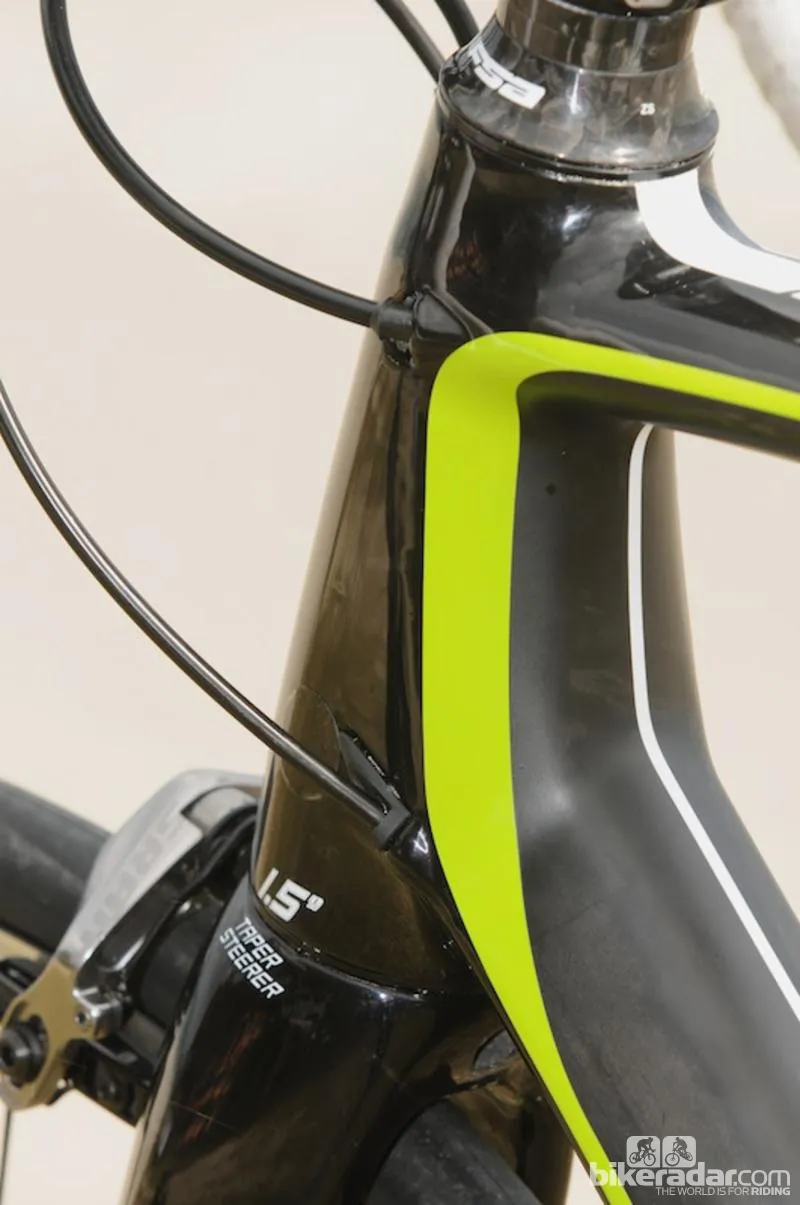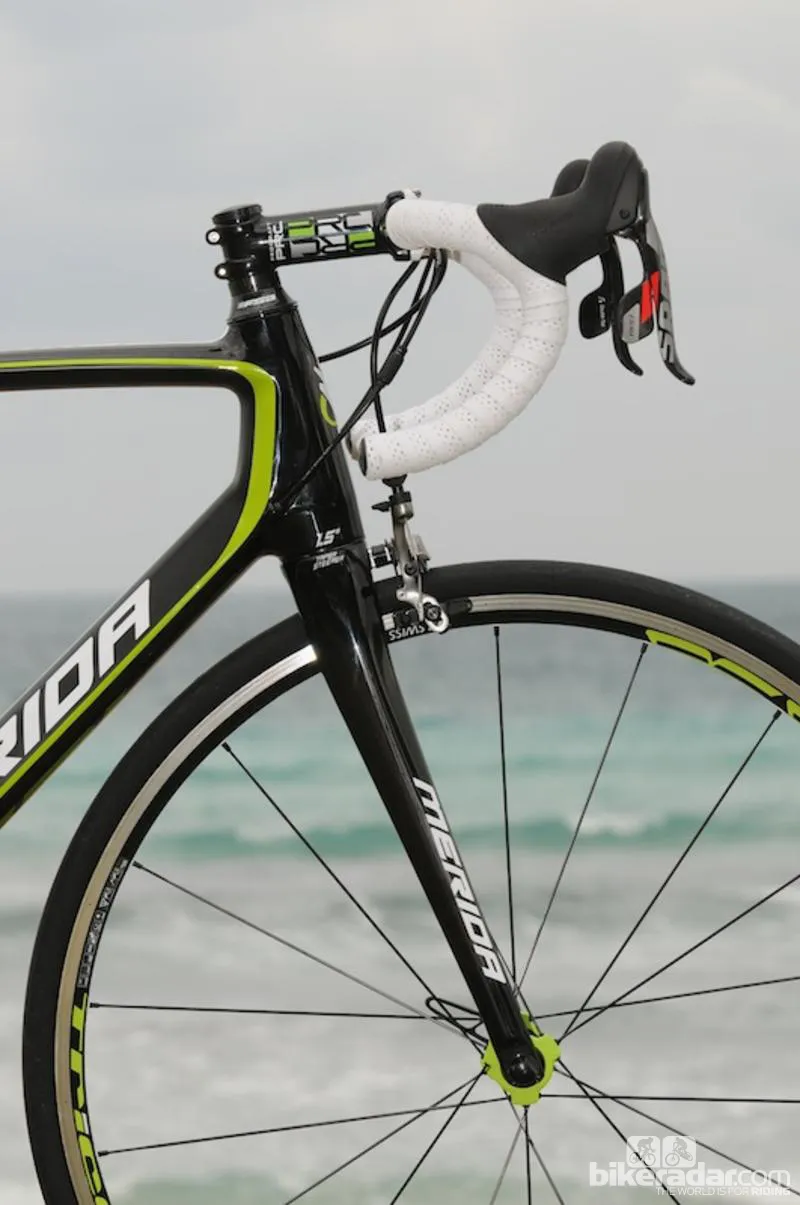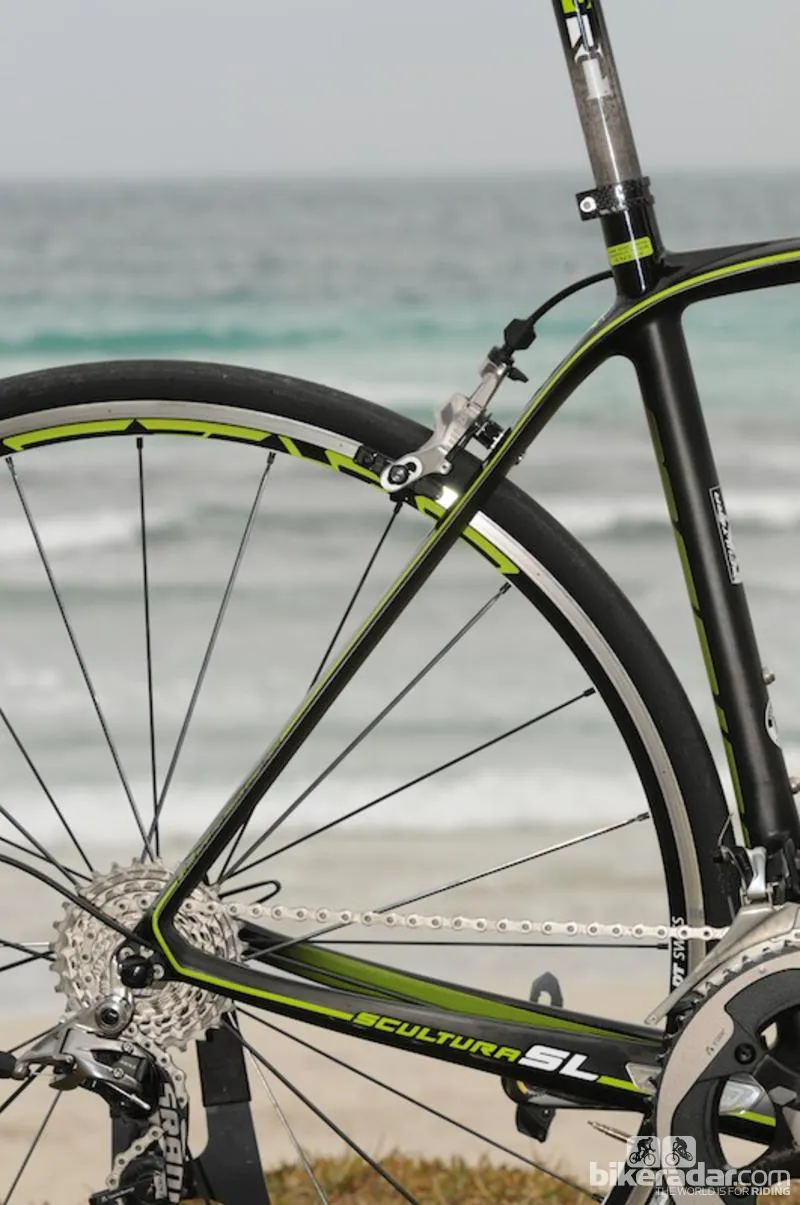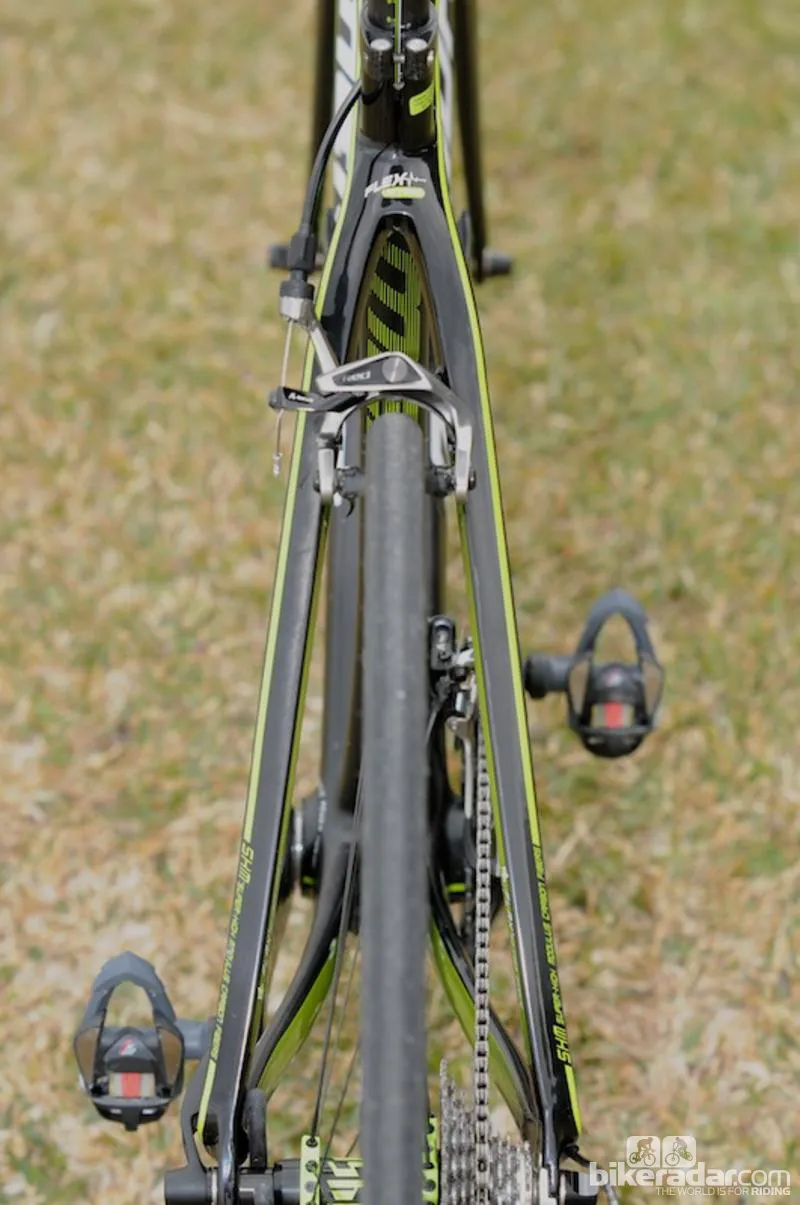With 11 world championship wins and an Olympic gold medal under the belts of the Multivan cross-country team, Merida are often perceived as a mountain bike brand. But the Taiwanese company have their eyes firmly on the ProTour and top-level road racing with their latest Scultura road bike.
Merida have never been ones to shy away from innovation. The previous generation Scultura Evo boasted double-chamber fork legs, an integrated front mech mount and an 875g frame weight (56cm size), while the 2010 Reacto was one of the first aero road bikes, before the concept went mainstream with the likes of the Specialized Venge and Scott Foil.
Examining their competitors in the high-end road bike market, Merida concluded that although ultra light weight frames are achievable, their performance – notably stiffness, and therefore efficiency – suffers. Their aim was to create a light, stiff but still comfortable frame, and crucially one that doesn’t cost the earth.
That’s not to say the Scultura is heavy – the claimed frame-only weight of 844g is still light enough to build a bike with clincher tyres and SRAM Red that weighs around 6kg (13lb). Not wanting to produce a frame that focused on function to the exclusion of form, Merida’s product designer Martin Stuetz drew on his background in industrial design and sculpture.

The name Scultura means sculpture in Italian, hinting at Merida's emphasis on form as well as function
There are three Scultura models for 2012: the SL Team, Pro and Comp. The range-topping SL comes with the new SRAM Red groupset and uses FSA’s BB386 Evo bottom bracket system. The extra surface area provided by the 86mm wide bottom bracket shell allows Merida to use a super-fat down tube and deep asymmetric chainstays to boost stiffness. A carbon bridge at the base of the seat tube further strengthens this critical area. The design accepts all large diameter axles (eg. BB30) and with an adaptor can take smaller ones, too.
Merida imbue the Scultura with some shock damping comfort using their FLEX-STAY technology. A layer of flax is added between the carbon sheets on the upper surface of the seatstays plus the top and bottom of the chainstays. This material has great stiffness and shock absorbing properties, and the 40-50g it adds to the frame weight is a price Merida are willing to pay.
The left-hand chainstay is fitted as standard with an underslung electric shifting battery mount, alongside the wheel. The internal routing can be changed to accommodate either mechanical or electrical cables via a system of plugged inserts, which helps future-proof the frame. A neat touch which shows Stuetz’s combination of design and aesthetics is the pair of ridges running along the down tube; these do double duty as internal cable channels and stiffening structures.

The Scultura's BB386 Evo oversize bottom bracket setup keeps things stiff underfoot
Most modern road bikes have a chainstay length of around 410mm, but the Scultura’s is 405mm, promising aggressive handling for the rider in a hurry. Wanting to test out all of the headlines, we embarked on a ride in unseasonal (for Mallorca) winds and light snow. Our medium/large SL Team test bike with Time pedals, bottle cage, clinchers and a layer of dirt weighed in at 6.57kg (14.48lb), which is under the UCI limit.
The first thing that becomes immediately apparent is how solid the bike feels. There’s no feeling of pedalling in ovals due to flex, and any lateral bottom bracket deflection isn't noticeable by a mere mortal. When you stand on the pedals the Scultura kicks forward. Allied to the tapered and enormously stiff head tube area, we had to slightly alter our sprinting and climbing style to account for the lack of flex.
Mallorca’s roads are mostly very smooth but after searching out the rough bits we found the Scultura to be firm but never harsh, presumably due to the flax fibres doing their job. The bottom bracket solidity gives the drivetrain an extra gear, and we had no problems rolling up smaller hills in the big ring when we’d normally be reaching for the front shifter. Front end stability is mighty impressive and unflappable – very reassuring on a fast 180-degree downhill bend when turning across a gusty wind.

The internal cable routing is compatible with both electronic and mechanical transmissions
The Scultura’s cables enter behind the head tube at around 45 degrees to the frame. When handling an unladen bike this feels like it could slow the steering because the cables aren't very flexible, but in the saddle it wasn't an issue. If anything, the cable position works like a damper for the steering, preventing any sudden flicks when unloaded, such as when riding no-handed. We tried it even at slow speeds and have no problems to report.
Although we hung on to four members of the Merida race team for most of our test ride, we have no illusions: the Scultura was merely flattering us with delusions of fitness. Most of us will never reach the limits of what this bike is capable of, but the beauty of owning a bike like this is knowing that it'll never disappoint.
The SL Team is officially a 2013 bike but it should be available in the UK around July/August for £5,500 (US readers may be disappointed to hear that Merida don't currently list any North American distributors on their website). The Scultura Pro uses the same mould but a lower modulus carbon fibre, resulting in around 130g of extra weight. It does retain the BB386 bottom bracket though, and costs significantly less – £1,500, with Shimano 105.
The sub-£1,000 (exact price TBC) Scultura Comp uses a different mould and different carbon fibre construction, with no flax. It also has to make do with a standard 68mm bottom bracket shell. However, it still gets a full-carbon fork with tapered steerer and the same cable routing. Claimed frame weight is 1,200g, and an increased chainstay length of 410mm allows use of tyres up to 25mm wide.










